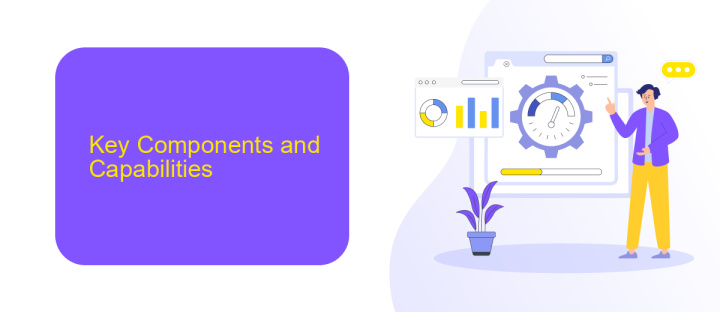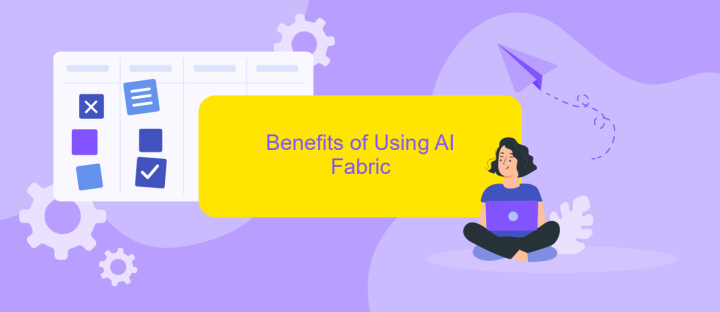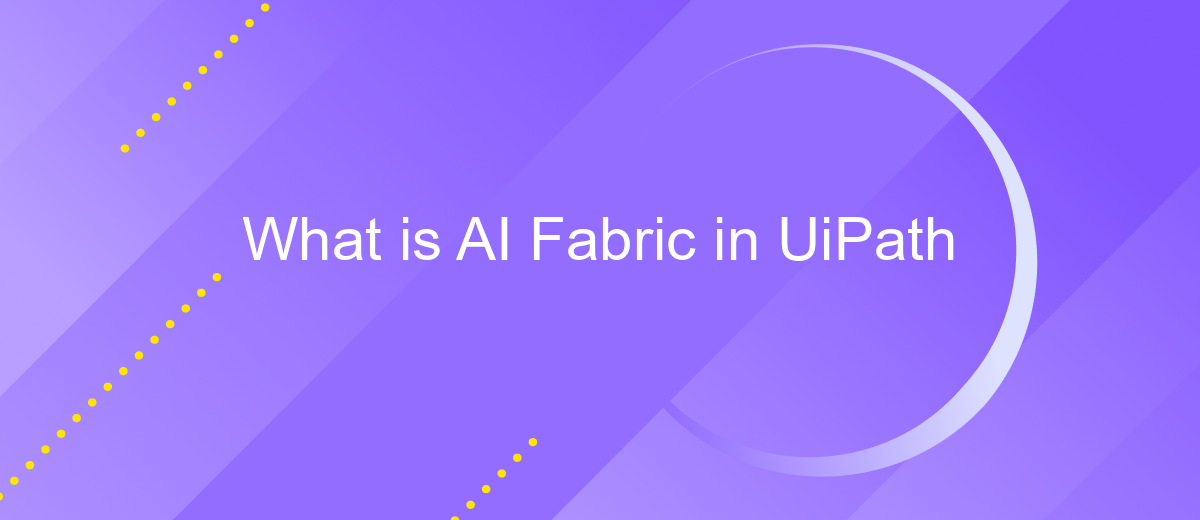What is AI Fabric in UiPath
AI Fabric in UiPath is a groundbreaking platform that seamlessly integrates artificial intelligence into robotic process automation (RPA). By enabling the deployment, management, and continuous improvement of machine learning models, AI Fabric empowers businesses to enhance their automation capabilities. This article explores the core features, benefits, and practical applications of AI Fabric, demonstrating how it revolutionizes the way organizations leverage AI for smarter, more efficient workflows.
Introduction to AI Fabric in UiPath
AI Fabric in UiPath is a powerful platform designed to seamlessly integrate AI capabilities into your robotic process automation (RPA) workflows. By leveraging AI Fabric, businesses can enhance their automation processes with machine learning models, allowing for more intelligent decision-making and task execution. This integration ensures that organizations can handle complex tasks that require cognitive abilities, such as image recognition, natural language processing, and predictive analytics.
- Integration with machine learning models
- Seamless deployment of AI into RPA workflows
- Enhanced decision-making capabilities
- Support for complex cognitive tasks
To facilitate the integration process, services like ApiX-Drive can be utilized. ApiX-Drive offers a user-friendly interface for setting up and managing integrations between various applications and services. By using ApiX-Drive, organizations can streamline the process of connecting AI Fabric with other tools and platforms, ensuring a smooth and efficient workflow. This makes it easier for businesses to leverage the full potential of AI and RPA, driving innovation and operational efficiency.
Key Components and Capabilities

UiPath's AI Fabric is a robust platform designed to integrate machine learning models into RPA workflows seamlessly. One of its key components is the AI Center, which serves as the central hub for managing, deploying, and monitoring machine learning models. This component allows users to easily upload pre-trained models or train new ones using their own data, thus providing flexibility and scalability in automation projects. The AI Center also offers version control and model retraining capabilities, ensuring that the models remain up-to-date and effective.
Another significant capability of AI Fabric is its integration features, which are enhanced through services like ApiX-Drive. ApiX-Drive facilitates the connection between various applications and AI Fabric, enabling smooth data flow and process automation. With ApiX-Drive, users can set up integrations without coding, streamlining the process of connecting different systems and ensuring that data is accurately transferred and utilized. Additionally, AI Fabric supports real-time data processing and analytics, allowing businesses to make data-driven decisions quickly and efficiently.
Benefits of Using AI Fabric

AI Fabric in UiPath offers a multitude of benefits that can significantly enhance the automation capabilities of businesses. By integrating AI models directly into RPA workflows, organizations can achieve higher efficiency and accuracy in their processes.
- Seamless Integration: AI Fabric allows for easy integration with various third-party services like ApiX-Drive, streamlining the process of connecting different applications and automating workflows.
- Enhanced Decision Making: By leveraging AI models, businesses can improve decision-making processes, leading to more informed and accurate outcomes.
- Scalability: AI Fabric supports scalable solutions, enabling organizations to grow their automation initiatives without compromising performance.
- Cost Efficiency: Automating complex tasks with AI reduces the need for manual intervention, thereby cutting down operational costs.
- Real-time Analytics: The platform provides real-time analytics and insights, helping businesses to continuously monitor and optimize their processes.
Incorporating AI Fabric into your RPA strategy not only boosts productivity but also ensures that your automation efforts are future-proof. With seamless integrations and advanced AI capabilities, UiPath’s AI Fabric is a game-changer for any organization looking to stay ahead in the competitive landscape.
Use Cases and Applications

AI Fabric in UiPath is revolutionizing the way businesses leverage artificial intelligence by providing a seamless platform for integrating AI models into automation workflows. This allows organizations to enhance their automation capabilities, streamline processes, and make data-driven decisions more efficiently.
One of the most compelling aspects of AI Fabric is its versatility across various industries. From finance to healthcare, AI Fabric can be tailored to meet specific needs, making it an invaluable tool for businesses looking to stay competitive in a rapidly evolving market.
- Automated customer support: AI Fabric can be used to deploy chatbots and virtual assistants that handle customer inquiries, reducing response times and improving customer satisfaction.
- Data extraction: By integrating AI models, businesses can automate the extraction of relevant data from documents, emails, and other sources, significantly reducing manual effort.
- Predictive maintenance: AI Fabric enables predictive analytics, allowing companies to anticipate equipment failures and schedule maintenance proactively, thereby minimizing downtime.
- Fraud detection: Financial institutions can leverage AI Fabric to detect fraudulent activities in real-time, enhancing security and reducing potential losses.
For businesses looking to integrate AI Fabric with other tools and services, ApiX-Drive offers a robust solution. ApiX-Drive simplifies the integration process, enabling seamless data flow between AI Fabric and various applications, enhancing overall efficiency and effectiveness.
Future Prospects and Innovations
The future of AI Fabric in UiPath holds immense potential for transforming the way businesses operate. As AI technology continues to evolve, AI Fabric is set to integrate more sophisticated machine learning models and advanced analytics, enabling organizations to automate complex tasks with unprecedented efficiency. This evolution will likely see a deeper incorporation of natural language processing, computer vision, and predictive analytics, making UiPath's AI Fabric a cornerstone in the landscape of intelligent automation.
Moreover, innovations in integration services like ApiX-Drive will play a crucial role in expanding the capabilities of AI Fabric. ApiX-Drive enables seamless integration between various software applications, ensuring that AI models can interact effortlessly with diverse data sources and enterprise systems. This will not only enhance the flexibility of AI Fabric but also streamline the implementation process, allowing businesses to harness the full potential of artificial intelligence with minimal friction. As these technologies advance, we can anticipate a future where AI-driven automation becomes an integral part of everyday business operations, driving productivity and innovation to new heights.
- Automate the work of an online store or landing
- Empower through integration
- Don't spend money on programmers and integrators
- Save time by automating routine tasks
FAQ
What is AI Fabric in UiPath?
How do you integrate AI Fabric with existing RPA workflows?
What types of machine learning models can be deployed on AI Fabric?
How can you monitor the performance of machine learning models in AI Fabric?
What are the prerequisites for using AI Fabric in UiPath?
Apix-Drive is a universal tool that will quickly streamline any workflow, freeing you from routine and possible financial losses. Try ApiX-Drive in action and see how useful it is for you personally. In the meantime, when you are setting up connections between systems, think about where you are investing your free time, because now you will have much more of it.


